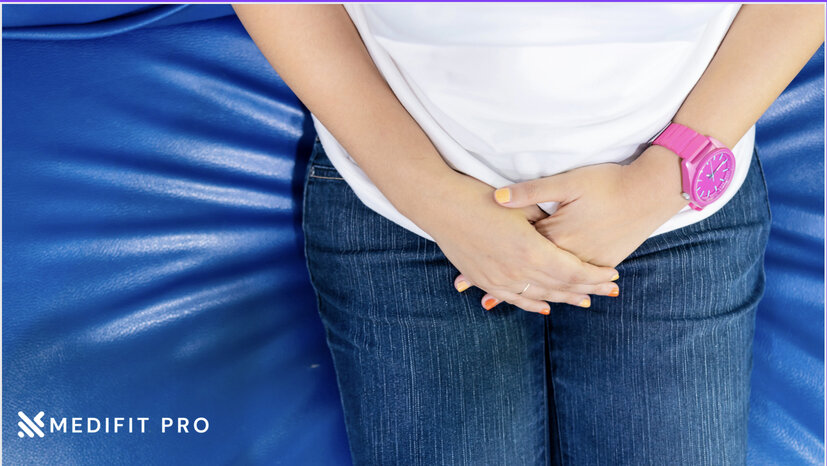Vaginal yeast infection, also known as vulvovaginal candidiasis, is a common and uncomfortable condition that affects many women. It is caused by an overgrowth of the fungus Candida in the vagina, which can lead to a variety of unpleasant symptoms. Although vaginal yeast infection is not usually serious, it can be very uncomfortable and can interfere with daily life.
In this article, we will discuss everything you need to know about vaginal yeast infection, including it’s causes, symptoms, diagnosis, treatment, and prevention. It is important to understand the causes and symptoms of vaginal yeast infection in order to seek appropriate treatment and prevent future infections from occurring.
Overall, this article aims to provide a comprehensive overview of vaginal yeast infection and offer practical advice on how to manage this condition. So, let’s dive in and explore this common issue that affects so many women around the world.
Causes of Vaginal Yeast Infections
Vaginal yeast infection is typically caused by an overgrowth of the fungus Candida in the vagina. This overgrowth can be triggered by a variety of factors, including:
1. Candida overgrowth: Candida is a type of fungus that is naturally present in the vagina. However, when there is an overgrowth of Candida, it can lead to a vaginal yeast infection. This can be caused by factors such as a weakened immune system, a diet high in sugar and refined carbohydrates, or taking antibiotics.
2. Antibiotics and other medications: Antibiotics can disrupt the balance of bacteria in the vagina, which can lead to an overgrowth of Candida. Other medications that can contribute to vaginal yeast infections include corticosteroids and some birth control pills.
3. Hormonal changes: Hormonal changes, such as those that occur during pregnancy or menopause, can alter the balance of bacteria in the vagina and lead to a vaginal yeast infection.
4. Diabetes: Women with diabetes are more prone to developing vaginal yeast infections, as high blood sugar levels can promote the growth of Candida.
5. Weakened immune system: A weakened immune system due to illness or medications can make women more susceptible to developing vaginal yeast infections.
6. Tight clothing and underwear: Wearing tight-fitting clothing or synthetic underwear can create a warm, moist environment that promotes the growth of Candida.
Overall, it is important to identify the underlying cause of a vaginal yeast infection in order to effectively treat and prevent future infections. By understanding the factors that can contribute to vaginal yeast infections, women can take steps to reduce their risk of developing this uncomfortable condition.
Symptoms of Vaginal Yeast Infections
Vaginal yeast infections can cause a range of unpleasant symptoms. Here are the most common symptoms of vaginal yeast infections and why they occur:
1. Itching and irritation: One of the most common symptoms of a vaginal yeast infection is intense itching and irritation in and around the vagina. This can be caused by the overgrowth of Candida, which can irritate the sensitive skin in the vaginal area.
2. Burning sensation during urination: Some women with vaginal yeast infections may experience a burning sensation during urination. This occurs because the inflamed and irritated vaginal tissue comes into contact with urine, causing discomfort.
3. Abnormal vaginal discharge: Vaginal yeast infections can cause a thick, white, and curd-like discharge that is often described as “cottage cheese-like.” This discharge occurs due to the overgrowth of Candida, which can disrupt the normal balance of bacteria in the vagina.
4. Pain during sexual intercourse: Women with vaginal yeast infections may experience pain or discomfort during sexual intercourse. This is due to the inflamed and irritated vaginal tissue, which can be particularly sensitive during intercourse.
It is important to note that not all women with vaginal yeast infections experience all of these symptoms. Some women may only experience one or two of these symptoms, while others may experience all of them. Additionally, the severity of the symptoms can vary from person to person.
If you are experiencing any of these symptoms, it is important to seek medical attention to determine whether you have a vaginal yeast infection or another type of vaginal infection. This will allow you to receive appropriate treatment and alleviate your symptoms.
Diagnosis of Vaginal Yeast Infection
If you suspect that you may have a vaginal yeast infection, it is important to see a healthcare provider for an accurate diagnosis. There are a few different methods that doctors may use to diagnose vaginal yeast infections:
1. Physical exam: During a physical exam, your healthcare provider will examine your vaginal area for signs of inflammation, redness, or discharge. They may also ask you about your symptoms and medical history to help determine whether you have a vaginal yeast infection.
2. Vaginal swab test: A vaginal swab test involves collecting a sample of vaginal discharge and examining it under a microscope or sending it to a lab for testing. This test can help your healthcare provider confirm whether you have a vaginal yeast infection and rule out other types of vaginal infections.
During a physical exam, your healthcare provider may use a speculum to open up your vagina and examine the vaginal walls and cervix. They may also take a sample of vaginal discharge using a cotton swab or a plastic loop. The sample is then sent to a lab for testing.
In the lab, the sample is examined under a microscope for the presence of yeast or other types of vaginal infections. The lab may also perform a culture test to determine the specific type of yeast causing the infection.
It is important to receive an accurate diagnosis for a vaginal yeast infection to ensure that you receive appropriate treatment. Over-the-counter antifungal medications can be effective for treating vaginal yeast infections, but other types of vaginal infections may require different treatments.
Treatment of Vaginal Yeast Infection
There are several treatment options available for vaginal yeast infections. Here are the most common treatment options, along with their benefits and drawbacks:
1. Antifungal medications: Antifungal medications are the most common treatment option for vaginal yeast infections. These medications can be taken orally or applied topically, such as in the form of creams or suppositories.
They work by killing the Candida fungus that is causing the infection. Antifungal medications are highly effective, with most women experiencing relief from their symptoms within a few days of starting treatment. However, these medications can cause side effects such as nausea, diarrhea, and abdominal pain.
2. Natural remedies: Some women may prefer to use natural remedies to treat their vaginal yeast infections. These remedies can include probiotics, tea tree oil, and boric acid suppositories. While natural remedies are generally considered safe, they may not be as effective as antifungal medications. Additionally, some natural remedies can cause side effects or may interact with other medications.
It is important to speak with your doctor before using any natural remedies to treat a vaginal yeast infection. They can help you determine whether a natural remedy is safe and effective for your specific case.
Overall, both antifungal medications and natural remedies can be effective treatment options for vaginal yeast infections. Your choice of treatment will depend on your personal preferences and the severity of your symptoms. Regardless of which treatment option you choose, it is important to complete the full course of treatment to ensure that the infection is completely eliminated.
Prevention of Vaginal Yeast Infections
Preventing vaginal yeast infections can help reduce the risk of experiencing uncomfortable symptoms and the need for treatment. Here are some tips for preventing vaginal yeast infections:
1. Wear loose-fitting clothing: Tight clothing can create a warm and moist environment that promotes the growth of Candida. Wearing loose-fitting clothing can help keep the vaginal area dry and reduce the risk of developing a yeast infection.
2. Avoid perfumed products: Perfumed soaps, lotions, and other personal care products can disrupt the natural balance of bacteria and fungi in the vagina, increasing the risk of a yeast infection. Use mild, fragrance-free products to help maintain vaginal health.
3. Practice good hygiene: Keeping the vaginal area clean and dry is important for preventing yeast infections. Be sure to wipe from front to back after using the restroom, and avoid using douches or other vaginal products unless recommended by your doctor.
4. Eat a healthy diet: A diet high in sugar and refined carbohydrates can increase the risk of developing a yeast infection. Eating a balanced diet rich in whole grains, fruits, and vegetables can help support overall vaginal health.
By following these prevention tips, women can reduce their risk of developing a vaginal yeast infection. However, it is important to note that yeast infections can occur even with good hygiene practices. If you suspect that you have a yeast infection, seek medical attention to receive an accurate diagnosis and appropriate treatment.
Conclusion
Summary of the main points from the article’s conclusion:
• Vaginal yeast infections are caused by Candida overgrowth in the vagina.
• Symptoms include itching, burning, and abnormal discharge.
• Causes can include antibiotics, hormonal changes, and weakened immune system.
• Diagnosis is done through a physical exam and vaginal swab test.
• Treatment options include antifungal medications and natural remedies.
• Prevention tips include wearing loose-fitting clothing, avoiding perfumed products, and practicing good hygiene.
• Seeking medical attention is important if experiencing symptoms to receive proper diagnosis and treatment.
• Ignoring symptoms can lead to complications, such as recurring infections or spread of infection to other parts of the body.
• Understanding the causes, symptoms, and prevention methods can help maintain good vaginal health and prevent uncomfortable symptoms.
Also read Adult Female Acne : How to get rid of it
Reference
Mayo Clinic: https://www.mayoclinic.org/diseases-conditions/yeast-infection/symptoms-causes/syc-20378999























Recent Comments